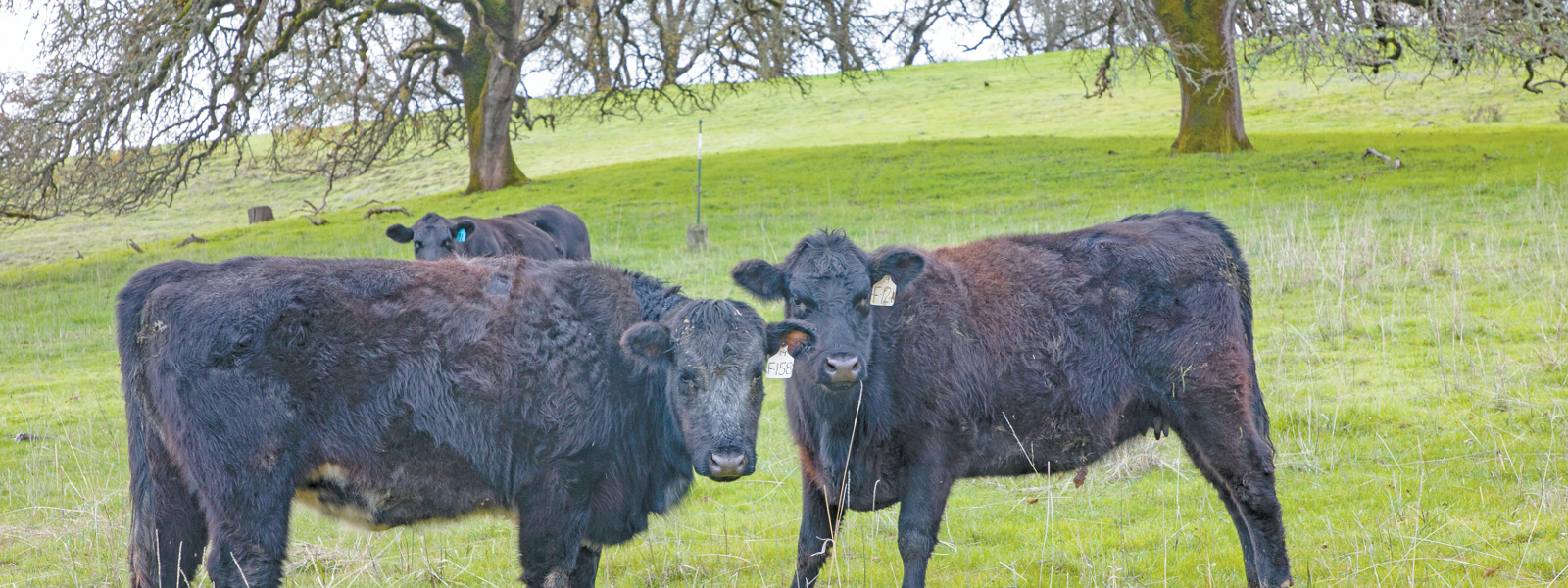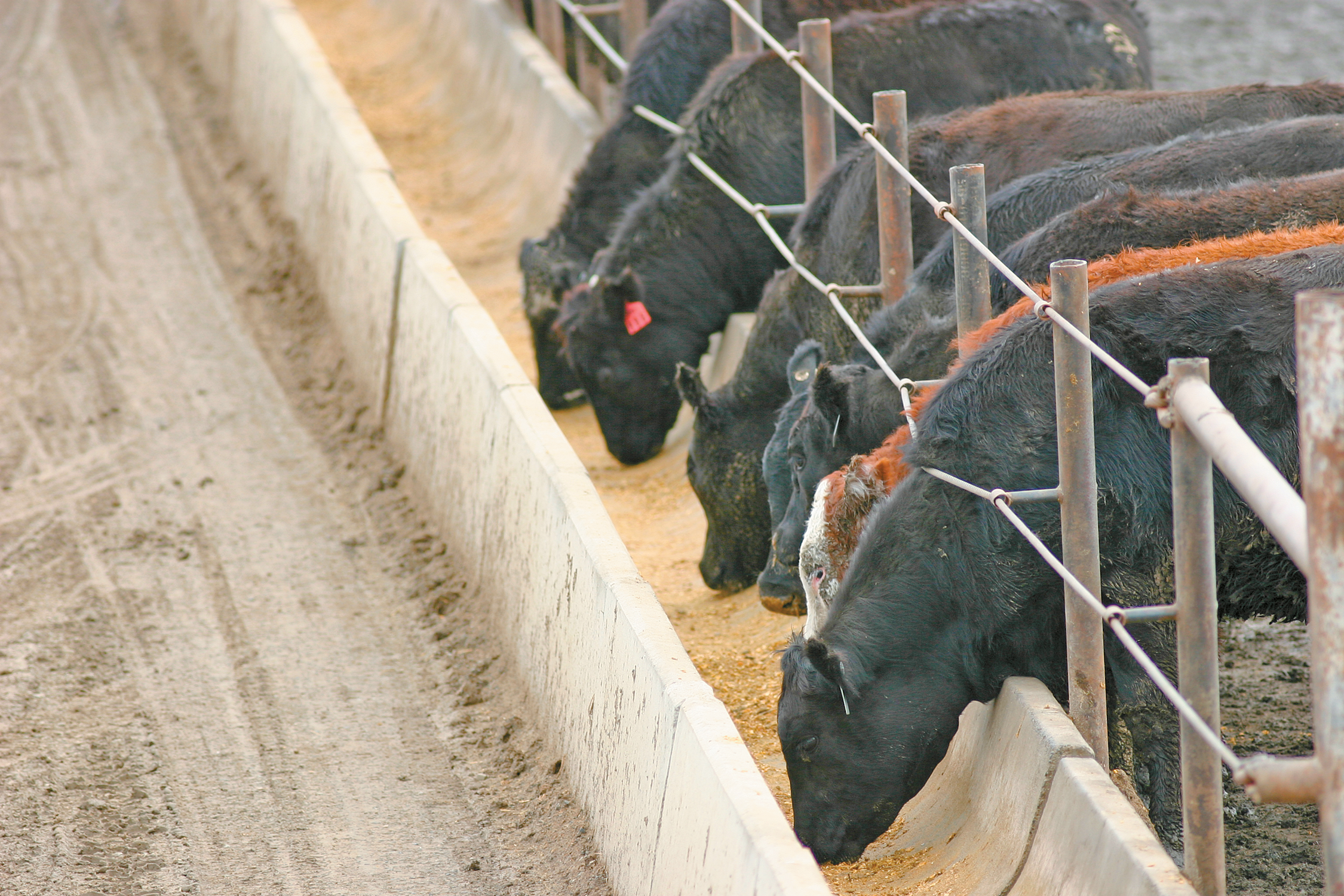Is grass-fed beef more sustainable? Result is unclear

Grass-fed beef cattle graze in Mendocino County. Researchers at the University of California, Davis, set out to determine if grass-fed beef has a smaller environmental footprint than conventional beef. Their published study produced conflicting results. Reseachers found that conventionally raised beef cattle produce less greenhouse gas but require greater energy use.
Photo/Lori Eanes


Ag Alert file photo
By John Watson
James Oltjen, a University of California Cooperative Extension animal management systems specialist, recently offered some pointed questions to consider when evaluating benefits of California grass-fed beef vs. those of conventional beef.
Is West Coast grass-fed beef special? Does it scale up commercially? Is it better for the environment than conventional grain-fed beef—or is it just consumer hype?
“With increasing concerns over the environmental impacts of conventional beef, grass-fed beef is now viewed by many consumers as a more sustainable alternative, but that’s not necessarily true,” Oltjen told attendees at the 2024 Beef Cattle Symposium held this month at UC Davis. “Until now, there’s been a dearth of research available to address these consumer claims.”
Oltjen is co-author of a 2022 Journal of Animal Science paper, which reports results of a study that sought answers to those questions by comparing conventionally raised beef with three production systems for grass-fed beef.
With California set to become a leader in grass-fed beef production and demand, Oltjen and fellow researchers set out to reevaluate grass-fed production systems in the western U.S.
The results? There was neither a clear winner nor loser.
According to the study, the conventional system had the lowest greenhouse gas footprint but the highest energy-use and smog footprints. “This study illustrated the complexities underpinning beef sustainability,” the study authors concluded.
Oltjen shared the findings in a presentation titled “Grass Versus Grain Finishing Beef Cattle.” His lecture was part of a day-long event in which UC researchers also discussed cattle-related topics including beef cattle health updates, emerging breeding technologies and divergent measurement standards for methane emissions.
For the grass-fed beef study, a team of UC Davis experts performed an experiment that evaluated environmental footprints—water, land, greenhouse gases and energy—along with beef quality and economic outcome.
Their study focused on a single region because, unlike conventional beef production (beef that’s finished in a feed yard for over 60 days), which produces a consistent product, grass-fed beef performance and carcass quality varies significantly depending on region, resource availability and forage quality.
When comparing grass-fed and conventional beef systems, Oltjen said none had clear superiority. But the study indicated that grass-fed systems showed differences in animal performance and carcass quality, resulting in environmental and economic sustainability trade-offs.
The term “grass-fed” can be misleading because grass-fed cattle begin by eating grass but could have been fed grain at some point in their lives. The term “grass-finished” is more precise because it means the animals ate grass, plants and shrubs their entire lives.
The study’s four systems included conventional beef cattle that were grass-fed and then finished on grain for 128 days; steers that were grass-fed and finished at 20 months or fed grain for 45 more days; and steers that were grass-fed and finished at 25 months of age.
Water use for beef cattle in the 20-month grass-fed system was substantially lower compared to the 25-month system. But cattle that fed on grass for 20 months had the lowest quality grade, lowest hot carcass weight and highest break-even costs.
Final body weight varied significantly, with the conventional cattle finishing at 1,393 pounds, followed by 25-month grass-fed cattle at 1,256 pounds, 45-month grass-fed and grain-finished cattle at 1,214 pounds and 20-month grass-fed cattle at 1,053 pounds.
Break-even costs with processing and marketing were $2.73 per hot carcass for conventional cattle, $4.08 for cattle grass-fed for 20 months, $3.64 for cattle grass-fed and grain-finished for 45 months and $3.78 for cattle grass-fed for 25 months.
With lower body weight—meaning less meat per animal—in the grass-fed categories, it ultimately costs more per pound to produce grass-fed beef.
Oltjen pointed out that alternative marketing systems, such as co-ops with strong consumer communications, are needed to justify the comparatively high prices that grass-finished beef producers require to make a profit.
Marbling scores were significantly greater for conventional beef cattle compared to all other treatments, while cattle in the 20-month grass-fed class had the lowest marbling score and quality grade. These measurements correlate with palatability.
The conventional system produced the lowest greenhouse gas footprint but required the highest energy input. The 20-month grass-fed cattle used the least amount of water but produced the greatest greenhouse gas.
The conventional beef system resulted in the lowest global warming potential, or GWP. The principal reason for greater GWP in grass-fed beef was due to increased enteric methane production from the high forage diets and increased days on feed.
As Oltjen put it, “These and many other examples showed that none of the four systems resulted in absolute economic, meat quality and environmental superiority.”
The Journal of Animal Science report, titled “Grass-fed vs. grain-fed beef systems: performance, economic and environmental trade-offs,” is available at www.ncbi.nlm.nih.gov/pmc/articles/PMC8867585/.
(John Watson is a reporter in Nevada County. He may be contacted at john.watson@comcast.net.)




